fossis
Gold Member
- Joined
- Jan 5, 2007
- Messages
- 7,837
- Reaction score
- 98
- Golden Thread
- 0
- Location
- eastern Oklahoma
- Detector(s) used
- Whites Prizm 11 & White's XLT
- Primary Interest:
- All Treasure Hunting
- #1
Thread Owner
We have an area close to me in the mts, that I found by accident while deer hunting, also an 'old timer' told me once about when they built the train track, they bulldozed out huge rocks that were full of 'marbles'.
He wasn't far off, the conglomerate boulders are remnants of 'ancient sea beds', all are full of different colored 'nodules', some of the black looks like 'flint rock', but one knapper said it was a 'low grade' for knapping arrowheads.
The colors range from grey, rust color, to black, & sometimes the small 'nodules' weather into the creeks & roll even rounder, then they do look like marbles.
Shells are not found very often, but one rock had a tail of a small 'Trilobite', ( pic with finger pointing).
also Herkimer Diamonds are found in association with these , (posted on Rocks & Minerals).
Fossis..............
He wasn't far off, the conglomerate boulders are remnants of 'ancient sea beds', all are full of different colored 'nodules', some of the black looks like 'flint rock', but one knapper said it was a 'low grade' for knapping arrowheads.
The colors range from grey, rust color, to black, & sometimes the small 'nodules' weather into the creeks & roll even rounder, then they do look like marbles.
Shells are not found very often, but one rock had a tail of a small 'Trilobite', ( pic with finger pointing).
also Herkimer Diamonds are found in association with these , (posted on Rocks & Minerals).
Fossis..............
Attachments
-
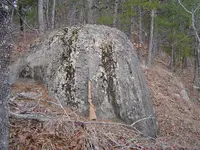 Ancient Sea Bed 005.webp444.9 KB · Views: 662
Ancient Sea Bed 005.webp444.9 KB · Views: 662 -
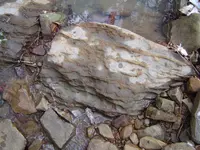 Ancient Sea Bed 006.webp197.1 KB · Views: 634
Ancient Sea Bed 006.webp197.1 KB · Views: 634 -
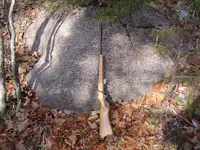 Ancient Sea Bed 011.webp418.6 KB · Views: 663
Ancient Sea Bed 011.webp418.6 KB · Views: 663 -
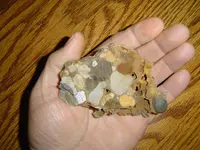 Ancient Seabed 001.webp151 KB · Views: 584
Ancient Seabed 001.webp151 KB · Views: 584 -
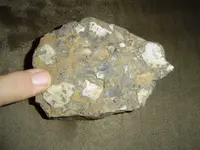 Trilobite & shells 001.webp177 KB · Views: 606
Trilobite & shells 001.webp177 KB · Views: 606 -
 Ancient Sea Bed 007.webp353.3 KB · Views: 628
Ancient Sea Bed 007.webp353.3 KB · Views: 628 -
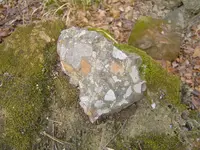 Ancient Sea Bed 005.webp263.6 KB · Views: 610
Ancient Sea Bed 005.webp263.6 KB · Views: 610 -
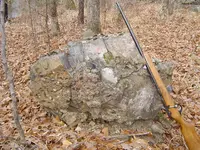 Ancient Sea Bed 004.webp414.9 KB · Views: 697
Ancient Sea Bed 004.webp414.9 KB · Views: 697







